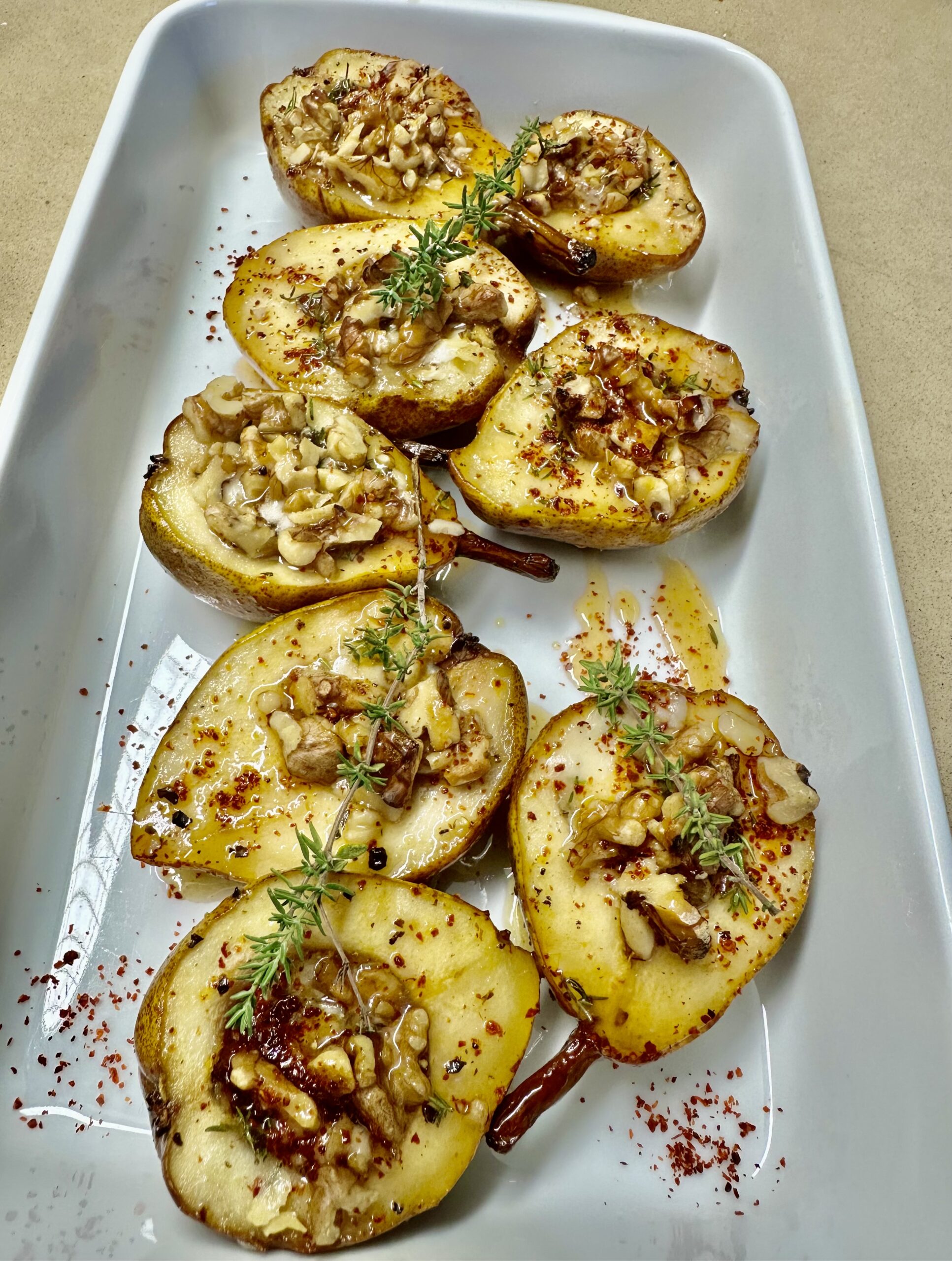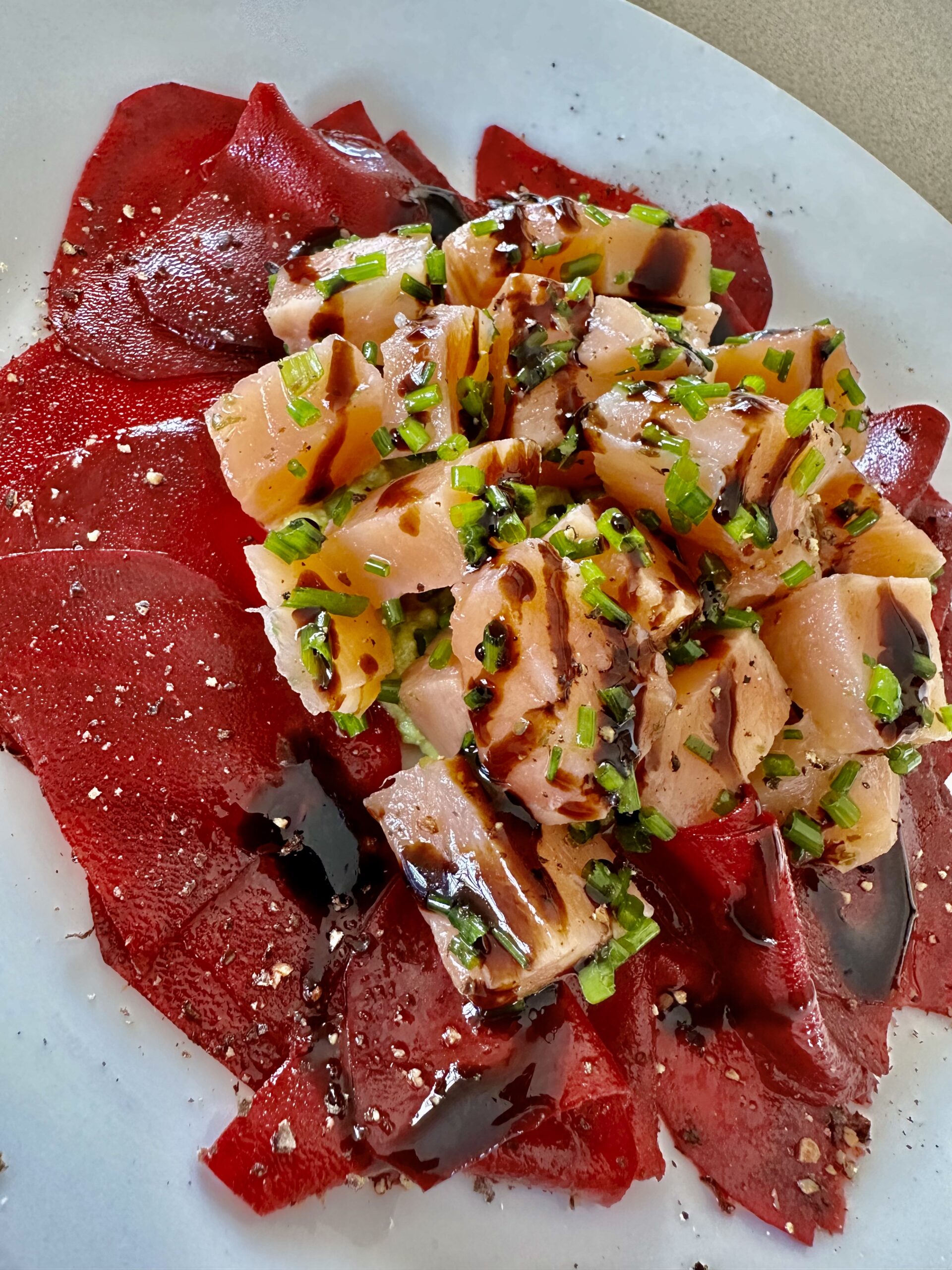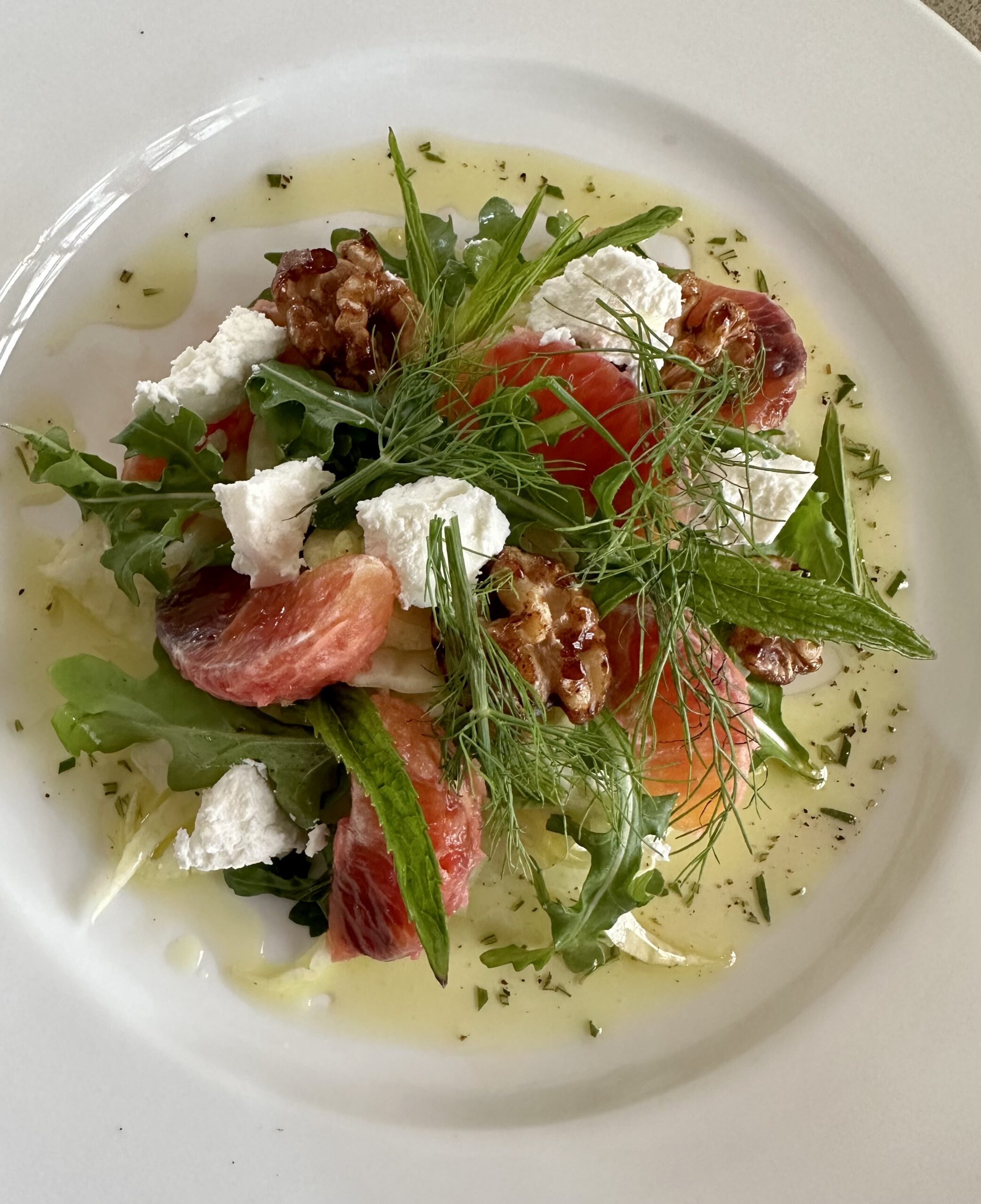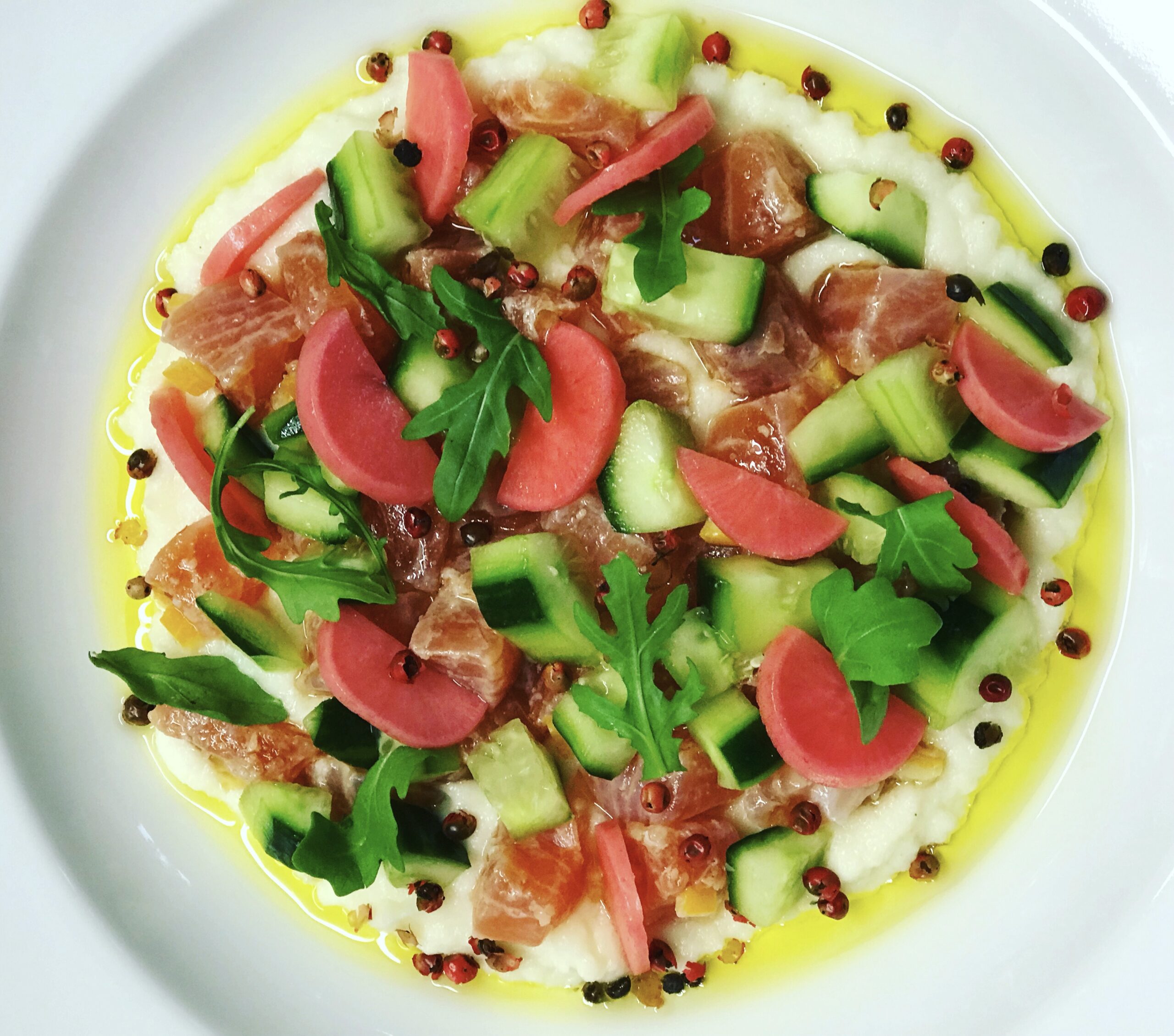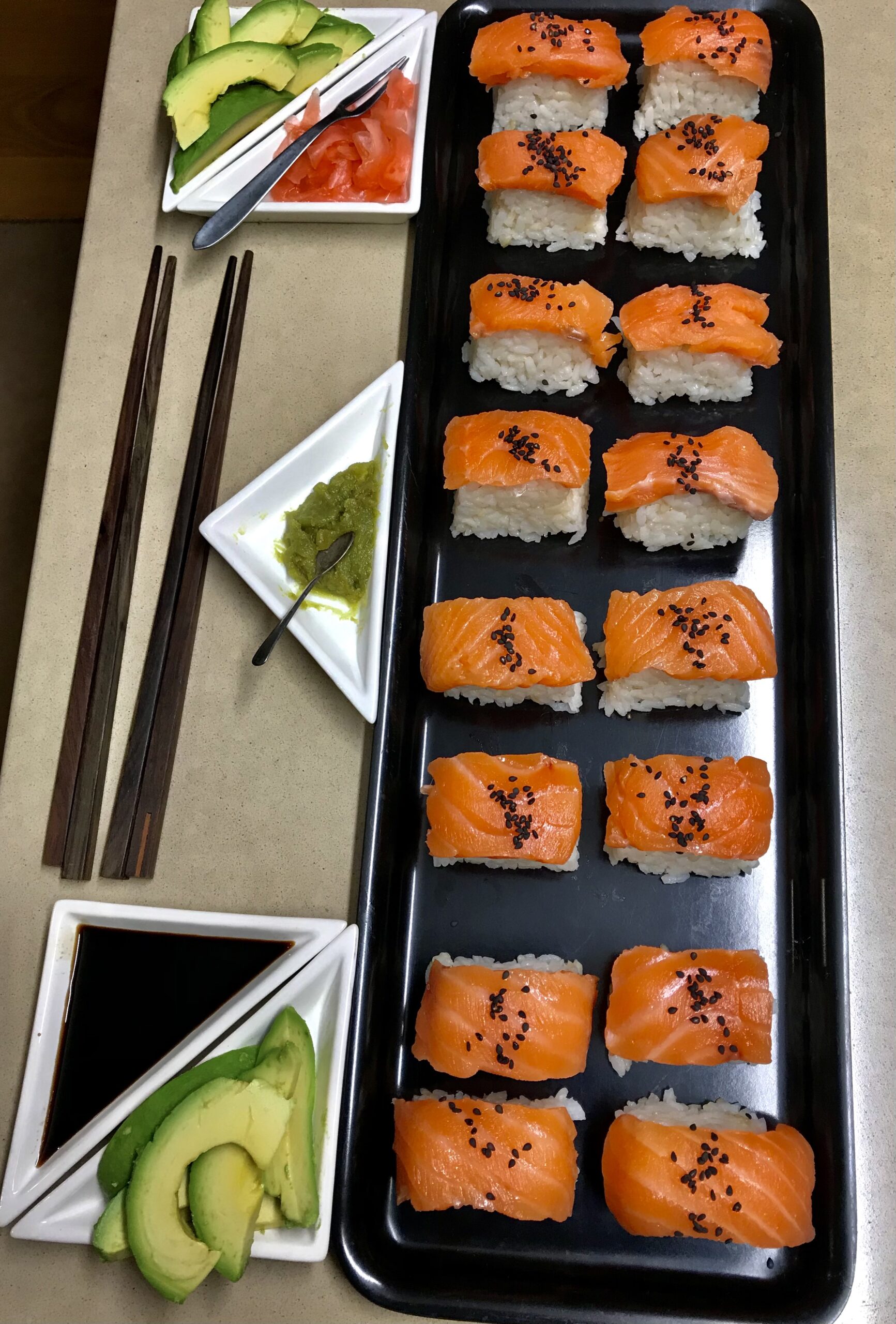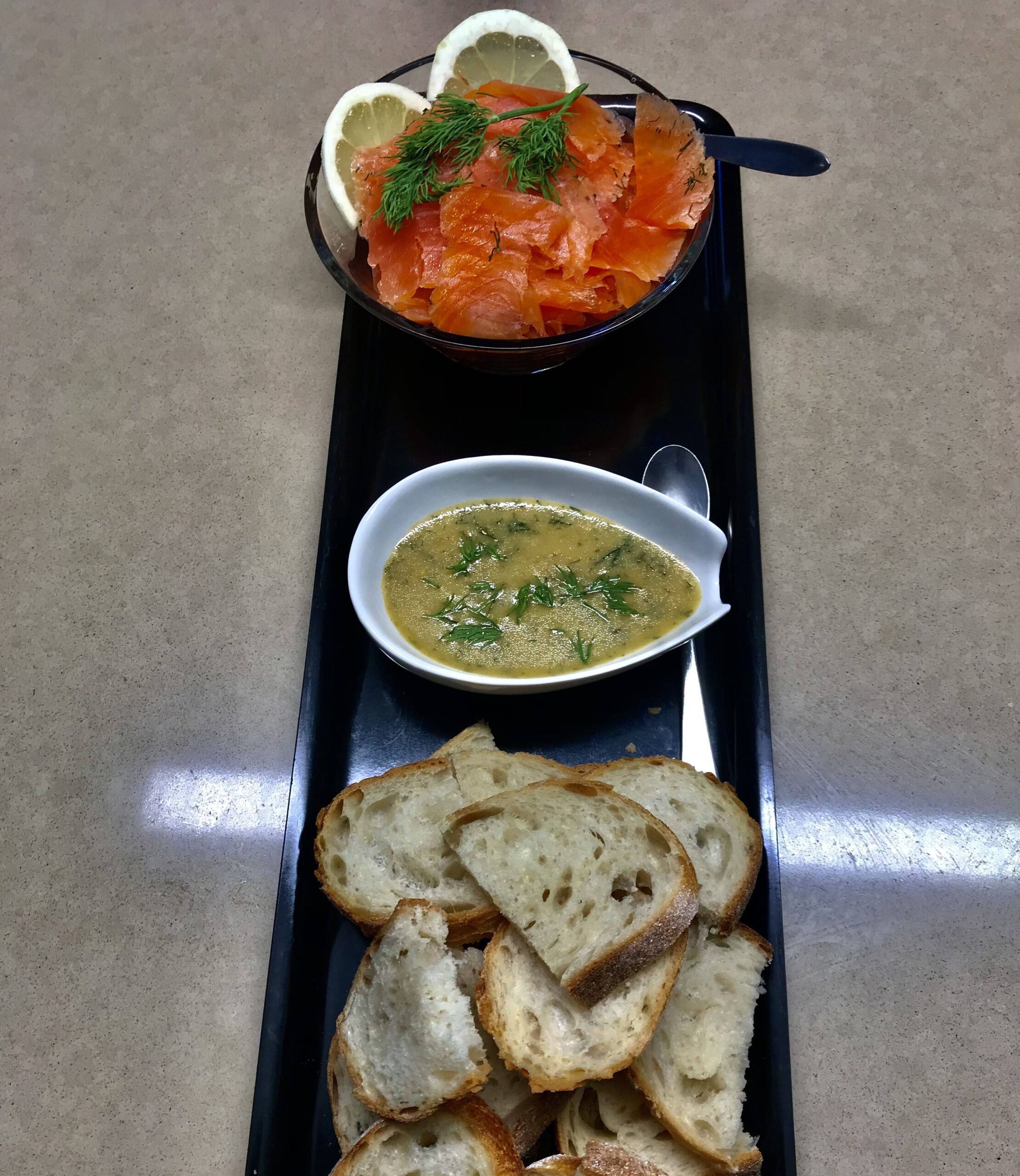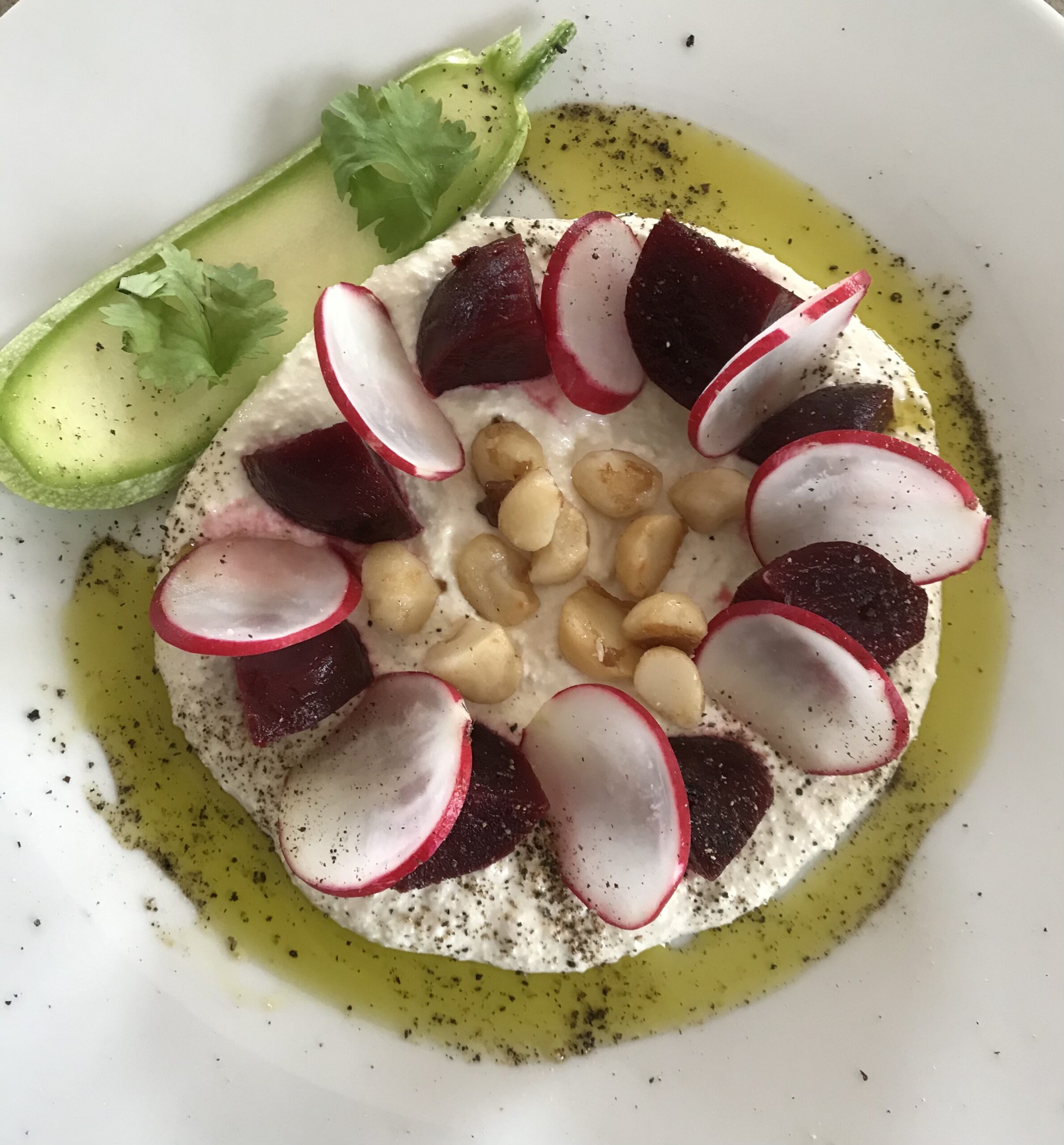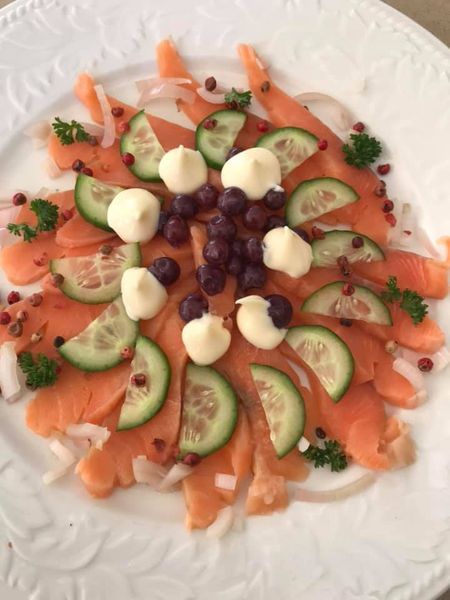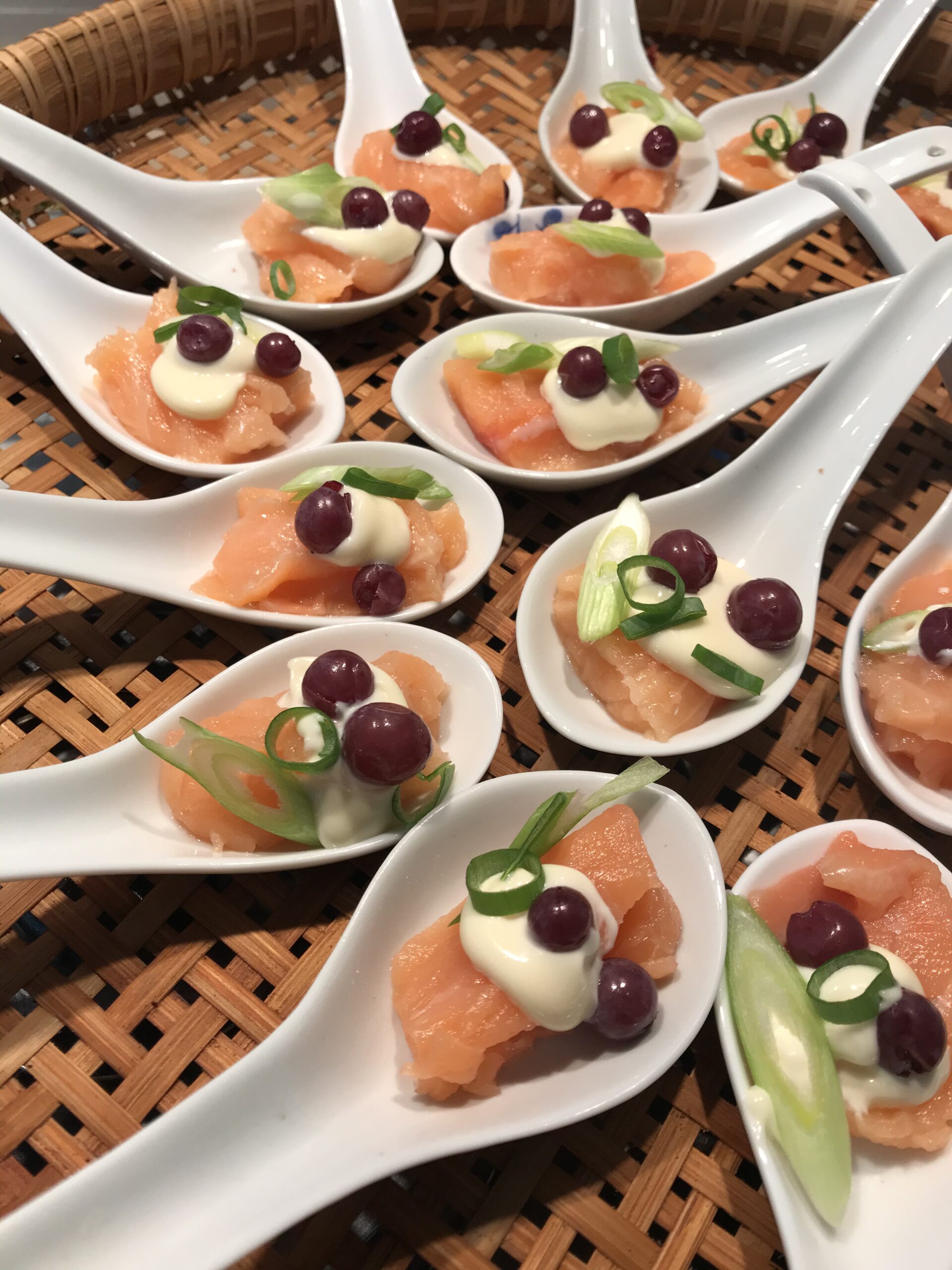Serve this jam, which is made with dried figs, on a cheese board. It goes well with most cheeses. It also pairs well with pâté, ham and chicken. Serve it in sandwiches or in this easy chicken recipe, instead of marmalade. A jar also makes a nice gift, if you can bear to part with any.
Serve a dollop on Greek yoghurt, or as a topping for baked brie. It also makes an unusual filling for scones, with or without whipped cream.
Last time we were holidaying in France I bought a few cans of pâté de foie gras. I served some recently as a starter, with a mini onion quiche and some brioche toast fingers.
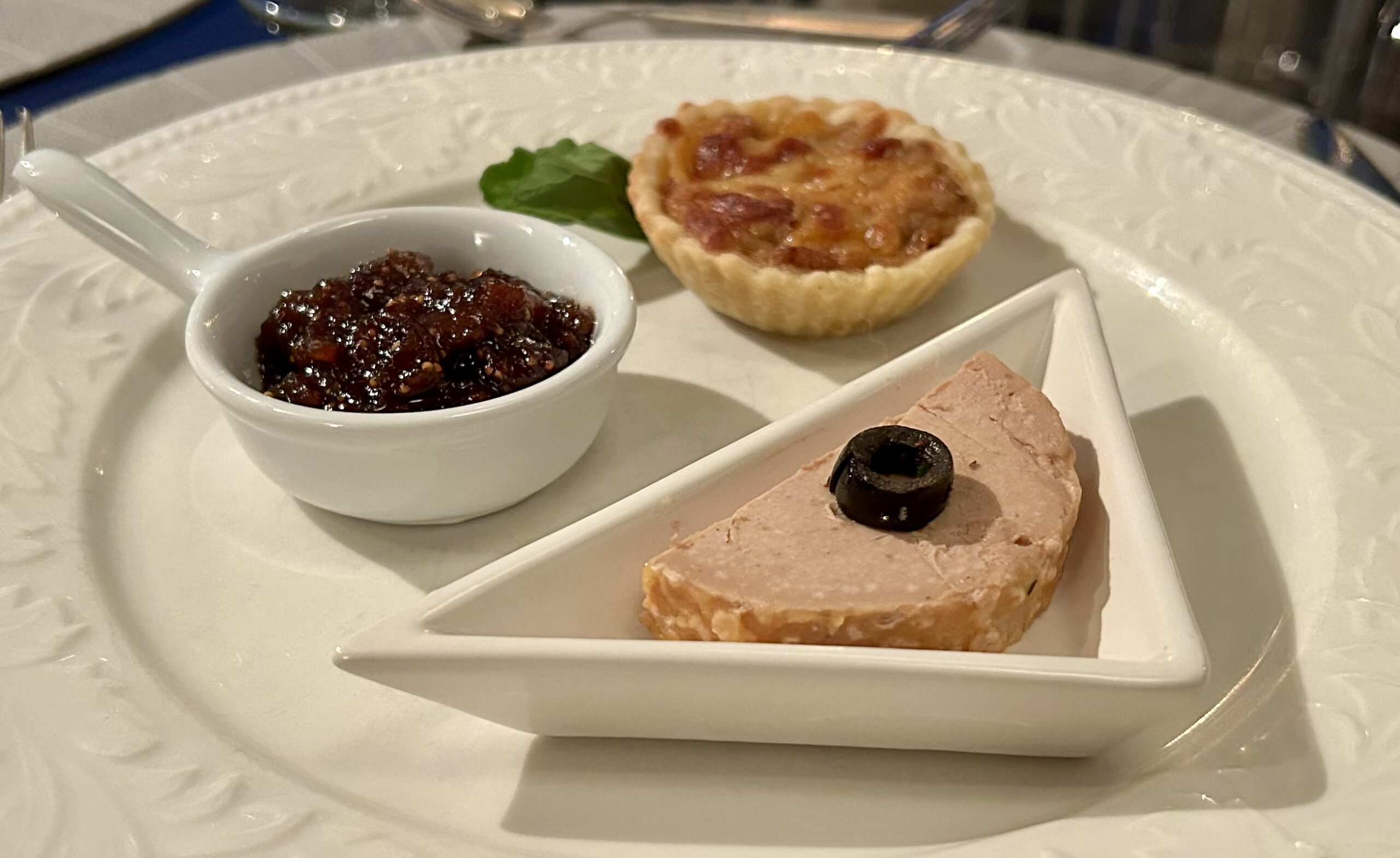
500g dried figs, stems removed
2 cups sugar
3 cups water
¾ cup balsamic vinegar
1 Tbs lemon juice
Cut each fig into quarters and place in a large saucepan with a heavy bottom. Add remaining ingredients. Bring to the boil then simmer for 10 minutes, stirring from time to time. Use a stick blender to puree the jam. Or tip it into a blender or food processor and process using the pulse butter. You want a chunky not smooth finish. Tip the jam back into the saucepan. If you used a stick blender you can do that in the pan. Continue to simmer the jam for 5-10 minutes or until thickened. It will thicken more when it cools. If it gets too thick, add a little water.
Meanwhile wash and dry several small jam jars. Place them in a microwave (without the lids) and zap them for 2-3 minutes on high. When the jam is ready, tip it into the hot jars, then screw the lids on and store them in a dark cupboard.
Note: while balsamic vinegar gives a nice flavour, if you don’t have any substitute another vinegar such as sherry, red wine or cider.

